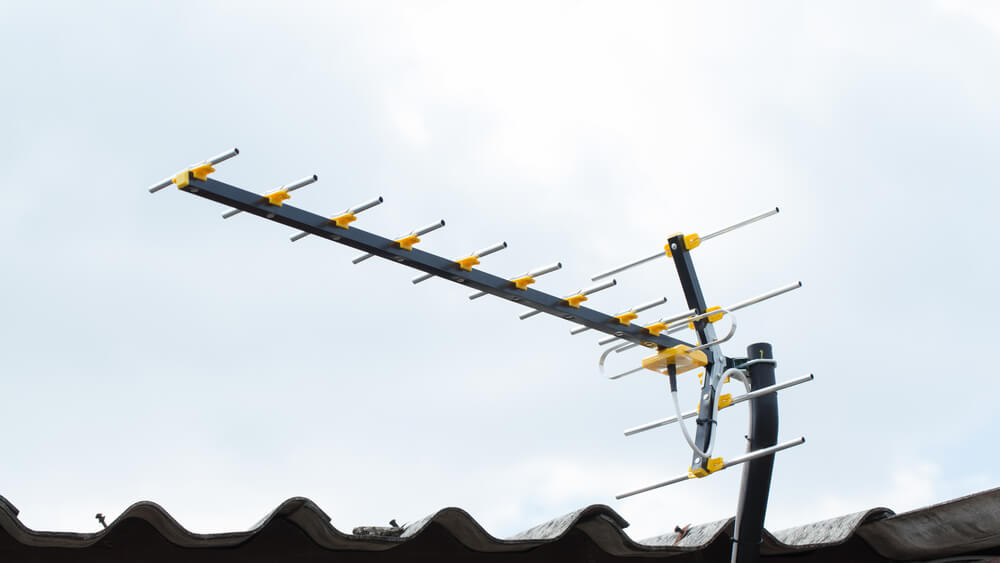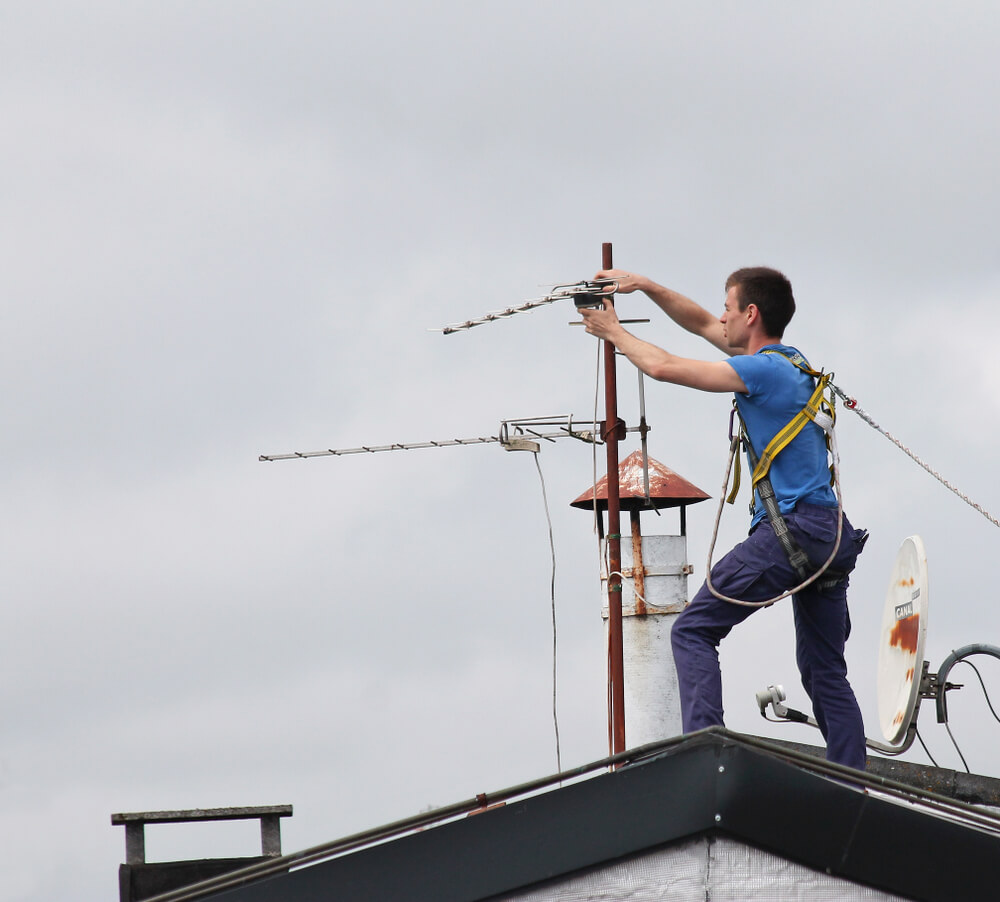A TV antenna booster is, in simple terms, a device that amplifies signals that a TV antenna receives for your television to have the best picture. Another usual segment of this HDTV antenna and signal booster is this TV signal booster kit that is used to increase the range of the broadcast signal within the house for better sound and vision output. Unlike cable antennas of the past, which are now old-fashioned, a digital TV antenna booster, as we see it today, allows you to enjoy your programs without a cable subscription. With increased signal reception of your TV antenna, you can enjoy all the programs aired by normal analog TV or high-transmission digital TV sets. This one can capture signals from as far as 100 miles, which makes it very efficient.
Using a booster for TV antenna in locations where signals are comparatively low or interrupted by other structures. These TV antenna signal boosters are essential, especially for digital TVs, as the sound and video require a stable signal. Booster for TV antennas for digital TV is very useful for eliminating such shortcomings as pixelation and unstable sound. The best digital TV antenna booster setup enables you to watch all the free channels with clarity and quality for the best experience.When planning to install a new Television system or replacing an old system it is advised to include a TV Antenna with a booster since it enhances signal reception and playing of television.
How Does a TV Antenna Booster Work?
A TV signal booster is a device that is used to amplify the signal of your television aerial and therefore increase the reception quality of your television set.
Here’s how it operates:
- Signal Reception: It begins with antenna that captures some transmitted signals from different Television stations. Such signals can be behind some building, trees or are away from the limit of the broadcasting source.
- Amplification: The TV signal booster is installed between the antenna and your television. The specialty of this component is to act as the place where the signals that the antenna intercepts are received and possibly amplified. This amplification ensures that the signal received by the television set is strong enough to be received without many interferences such as pixelation, noisy sound or even complete breakdown of the signal.
- Transmission: The amplified signals are then transmitted back towards your television screen once you have completed the amplification steps. This is because managing digital systems with a stable and clear picture and sound delivery successfully minimizes interferences when streaming modern digital and high definition shows.
- Eliminating Interference: A digital TV antenna booster also helps in the elimination of noise by other digital devices or environmental factors as well. This is even more so with the bigger cities where the interferences are likely to occur because of a large number of signals that are likely to contend for dominance.
- Extending Range: A TV antenna with a booster is another way of enhancing the signals and thereby enable one to pull signals from channels that cannot be received through normal only antenna. This is very advantageous particularly in locations where television signals are not strong or for rural stations.
Types of TV Antenna Boosters

Masthead Amplifiers
Masthead amplifiers are installed directly after the TV antenna, typically around 0.5-1.0m below the antenna’s horizontal position. They are utilized when the incoming signal from the antenna lacks sufficient power to provide reliable service to the TV tuner at the end of the cable. While they can sometimes enhance signal quality, they should not be solely relied upon for this purpose.
If signal quality remains inadequate, it’s recommended to consider using a different antenna or elevating the antenna to a higher point, such as on a taller mast, to resolve the issue. These amplifiers are powered remotely through connectors to a power supply within a house. Despite being ‘active’ devices, they operate on low voltage. It’s common for previous occupants to remove the power supply upon leaving, or for individuals to mistakenly turn off the power supply, resulting in a loss of TV reception.
Distribution Amplifiers
Distribution amplifiers are employed in larger television systems where significant signal loss occurs due to long cable runs or multiple TV points. Unlike masthead amplifiers, distribution amplifiers can boost signals to numerous points in high-rise buildings or complexes. They come in various sizes and configurations, capable of amplifying different frequencies, including cable network and satellite frequencies. Consequently, they are utilized in both Free-to-Air and integrated Foxtel TV systems. Whether an 8-apartment complex or a 1,000-occupant building, the appropriate distribution amplifier can always be sourced to meet specific needs.
Also Read: Do I need an amplifier for my Indoor Tv Antenna?
Which TV Signal Booster To Use?
Choosing the right TV signal booster depends on various factors, including location, the strength of available signals, your type of TV antenna, and your specific requirements.
Here’s a guide to help you determine which TV signal booster to use:
- Assess Signal Strength: Start by assessing the signal strength in your area. A signal booster may be beneficial if you experience poor reception or frequent signal dropouts. Use a signal strength meter or consult online signal strength maps to gauge the quality of signals in your location.
- Identify Weaknesses: Determine the specific weaknesses in your current setup. Due to long cable runs, are you struggling with weak signals, interference, or signal loss? Understanding your challenges will help you choose the right booster to address them effectively.
- Consider Antenna Type: Different types of antennas may require different signal boosters. For example, a masthead amplifier may be suitable if you have an outdoor antenna mounted on your roof. Indoor antennas may benefit from indoor signal boosters placed near the TV.
- Evaluate Power Options: Consider the signal booster’s power requirements. Some boosters require external power sources, while others may draw power from the TV’s USB port or include built-in rechargeable batteries. Choose a booster with power options that align with your setup and preferences.
- Check Compatibility: Ensure your booster is compatible with your TV and antenna setup. Check compatibility with your antenna type, TV model, and any other devices in your setup to avoid compatibility issues.
- Research Brands and Models: Research different brands and models of signal boosters to find one that meets your needs and budget. Look for reputable brands known for producing high-quality, reliable boosters. Read customer reviews and ratings to gauge the effectiveness and satisfaction of different models.
- Seek Professional Advice: If you’re unsure which signal booster to use or how to install it, consider seeking professional advice. An experienced installer can assess your setup, recommend the right booster, and ensure proper installation for optimal performance.
- Test and Adjust: Once you’ve chosen and installed a signal booster, test it thoroughly to ensure it improves your TV reception as expected. Then, make any necessary adjustments to the booster’s placement or settings to optimize performance.








